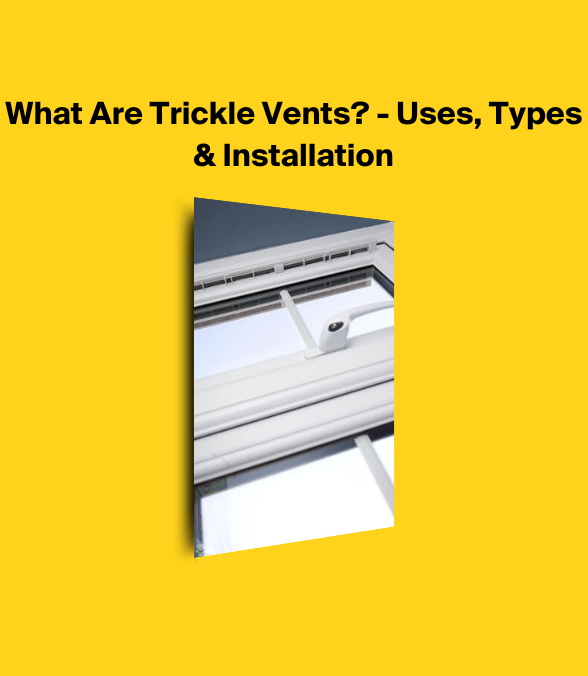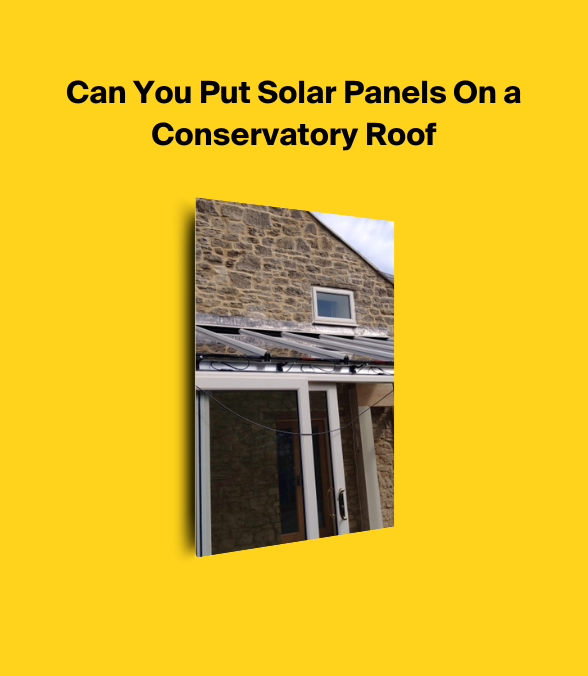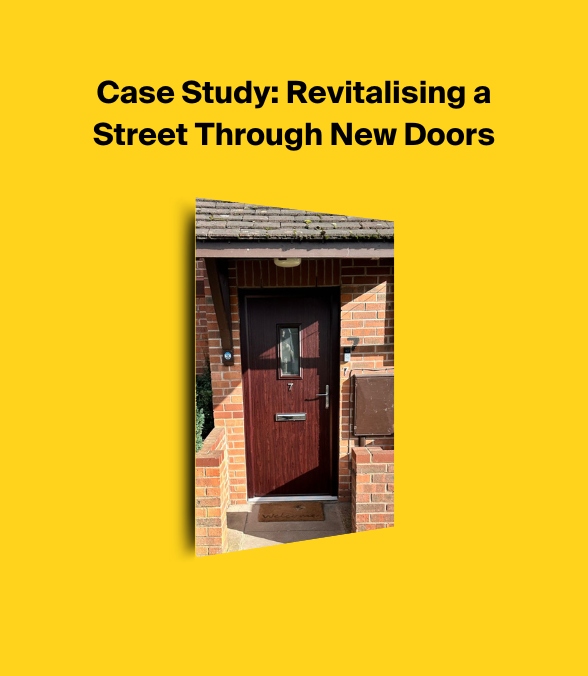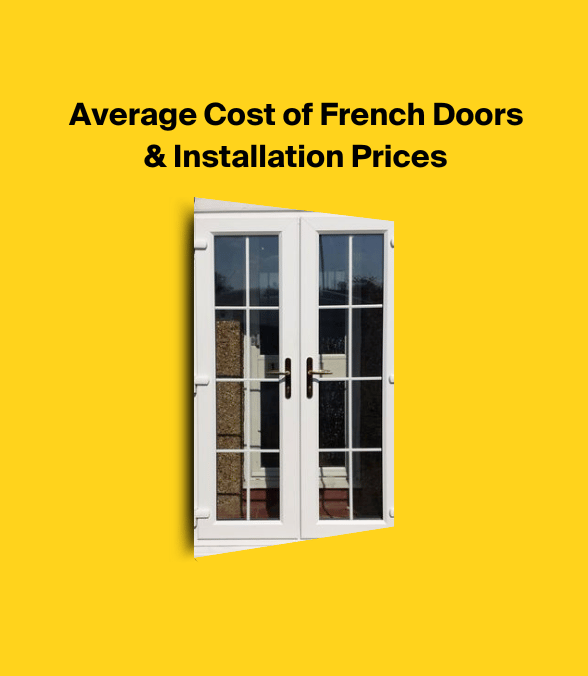Guide to Trickle Vents
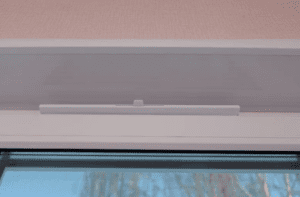
Trickle vents, which are small built-in openings in windows, serve as unsung heroes of indoor ventilation!
They maintain air freshness and prevent issues linked with stale indoor environments.

Build your window today!
Get a QuoteBy facilitating a steady exchange of indoor and outdoor air, these vents play a key role in dispelling humidity, reducing indoor pollutants and helping to regulate room temperature.
As you read on, you’ll learn not just about “what are trickle vents” but also how they can make your home more comfortable and healthier.
Window Trickle Vents - In Summary
- Trickle vents are ventilation devices integrated into windows and doors. They facilitate a controlled fresh air flow and improve indoor air quality by reducing pollutants, moisture, and condensation.
- Various designs of trickle vents exist for different window types, including through-frame, over-frame, and glazed-in options. They can be installed in new windows or retrofitted into existing ones, impacting the vent’s operation and functionality.
- The installation of trickle vents must comply with building regulations that require their presence when replacing older windows. Vents can cost from £15 to £40, with professional installation averaging an additional £50 per window.
Basics of Trickle Vents
Some of you might not even notice the trickle vents installed on your windows and doors, but that doesn't mean they aren't a big player in a window's operation.
Often integrated into window frames, trickle vents act as small but vital ventilation system components.
These devices comprise small openings at the top of windows and doors that facilitate a continuous yet controlled air circulation within enclosed spaces.
They primarily facilitate the natural movement of fresh air within a room, dispersing and diluting indoor pollutants such as volatile organic compounds (VOCs), radon, and excessive humidity.
This results in significantly improved indoor air quality.
Various methods, including the common ‘Up and Over’ design, are used to install trickle vents.
In this design, the vent can be fitted to the window frame or between the glass and the frame, thus achieving a seamless appearance while ensuring optimal functionality.
The Role of Trickle Vents
Trickle ventilators, or trickle vents, are highly significant in building structures. These devices facilitate ventilation, enabling consistent fresh air circulation within a room.
They assist in maintaining indoor air quality by permitting the release of stale air. But that’s not all they do.
Trickle vents also contribute to temperature regulation by facilitating a consistent and controlled airflow, thus aiding in maintaining a steady room temperature while minimising heat loss.
So, how do trickle vents work? A small opening in the window or wall allows for a continuous exchange of air.
Furthermore, trickle ventilation windows have several benefits, including:
- Reducing condensation within buildings
- Addressing poor ventilation issues by providing a small, controlled opening in the window frame
- Allowing fresh air to enter and stale air to exit, improving indoor air quality
- Mitigating mould growth and dampness by limiting condensation accumulation
Trickle vents improve ventilation and prevent condensation on windows, helping to create a healthier and more comfortable living environment.
Types of Trickle Vents
I'm sure you'll be glad to know that if you can customise your doors and windows, you can customise the design of your window trickle ventilators.
Various trickle vent designs are available to accommodate different window types and materials.
These designs, including through-frame, over-frame, and glazed-in options, can be installed in new or retrofitted to existing windows.
Each design and corresponding installation method significantly impact the vent’s overall operation and functionality.
Through-Frame Integration
Through-frame integration in trickle vents involves positioning the vent through the top of the window frame and integrating it into the frame during installation.
This installation approach guarantees efficient ventilation without disturbing the seamless appearance of the window. It also provides an unobtrusive and functional design.
Trickle vents can be installed on various window frame materials, and having trickle vents fitted is a great way to improve indoor air quality. The materials include:
- PVC-u
- Timber
- Steel
- Aluminium
All of these materials can support the through-frame integration method, which, due to its versatility, has made it a favoured choice for both builders and homeowners.
Over-Frame Additions
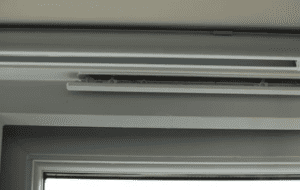
Over-frame additions in trickle vents are an alternative installation method when the trickle vent cannot be accommodated within the frame.
In this scenario, the trickle vent is added over the window frame, providing ventilation by covering the window’s head or frame.
This method ensures a consistent fresh air flow, even when standard trickle vents cannot fit through the existing frame.
Though over-frame additions present several advantages, such as improved ventilation, controlled airflow, better air quality, and increased energy efficiency, they also have potential drawbacks.
These may include compromising the window's security and meeting PAS 24 standards, increasing its vulnerability to intrusion, and possibly causing heat dissipation.
Additionally, the added expenses and the potential impact on sound and heat insulation should be considered.
Glazed-In Options
Glazed-in trickle vents are specialised window vents individually tailored and integrated into the fabrication process to fit seamlessly along the top of the sealed glass unit.
The installation involves fitting the vent along the top of the sealed glass unit between the glass unit and the frame profile. Holes are then drilled into the window frame to secure the vent.
Even when the window is closed, these vents permit continuous airflow, thus improving air quality without compromising security.
This makes glazed-in options an excellent choice for high-rise and exposed areas and ground-floor windows, as they are an integral part of the glass structure.
Advantages of Trickle Vents
Next up, we'll go through what fitting trickle vents in your home can do for it, with a range of advantages to having them.
The benefits of trickle vents extend far beyond simple ventilation.
They play a big role in enhancing indoor air quality by offering background ventilation. This aids in the elimination of moisture and pollutants from indoor air and could help stop leaking windows.
This perpetual air exchange mitigates:
- Moisture buildup within a room
- Chances of condensation
- Dampness
- Mould growth
Furthermore, trickle vents contribute to extending the lifespan of windows. By providing controlled ventilation, these devices:
- Reduce the necessity to keep windows perpetually open, thereby reinforcing the overall security of the residence
- Help avoid wear and tear on window mechanisms
- Prolong the life of your windows
Trickle Vent Installation
The installation process can seem stressful, but getting a professional to do the job for you should remove some doubts you may have.
Whether in new windows or retrofitted into existing ones, trickle vent installation demands precise drilling and secure fastening.
The type of trickle vent and the specific requirements of the window or door where it will be installed play a critical role in the installation process.
Retrofitting Trickle Vents
Although all window types can be retrofitted with trickle vents if one possesses adequate DIY skills, it is often recommended to opt for professional installation.
This is due to the need for precise drilling and to ensure compliance with building regulations, which can be complex for the average homeowner.
Hiring an expert to install trickle vents in your home is best to avoid complications.
The process of retrofitting trickle vents in existing windows involves the following steps:
- Determine the optimal location for the vent.
- Measure and mark the window frame.
- Drill holes in the marked locations.
- Fit the vents into these holes.
- Make necessary adjustments to ensure optimal performance.
This allows existing windows to benefit from window trickle vents without needing to be completely replaced or installed new windows.
New Installations
In the case of new windows, the installation of trickle vents involves the following steps:
- Drill a ventilation hole through the window frame using a specially designed drill bit.
- Position the specific type of trickle vent on the frame and mark its location.
- Drill holes accordingly to fit and secure the vents.
- Use the necessary tools for this process, including a chosen type of through-frame trickle vent, pen or pencil for marking the vent position, tape, measuring tape, drill, screwdriver, and a silicone sealant.
The duration for a typical trickle vent installation in a new window can vary depending on the specific window and installation process.
It is advisable to seek guidance from a professional installer for an accurate estimate. This ensures proper installation and optimal vent functioning.
Misconceptions About Trickle Vents
Despite trickle vents' vast benefits and functionalities, they are often surrounded by common misconceptions. Many people are concerned about their potential impact on energy efficiency and sound insulation.
However, proper installation and product selection can effectively address these concerns.
Energy Efficiency Concerns
Energy efficiency is one of the most common misconceptions associated with trickle vents.
While trickle vents may slightly impact a home’s airtightness and energy efficiency, they ultimately have a net positive effect on energy management.
This is because trickle vents facilitate background ventilation, which helps to reduce heat loss and improve the home's overall energy efficiency.
You can also fit insulation film to windows to further improve this thermal efficiency.
Moreover, trickle vents have several benefits:
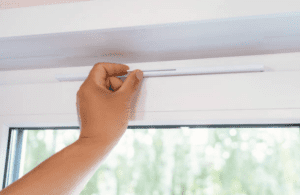
- They significantly contribute to temperature regulation by ensuring a steady and comfortable airflow, helping maintain stable indoor temperatures.
- They effectively mitigate condensation issues by facilitating a continuous circulation of air, preventing condensation buildup.
- Rather than causing substantial heat loss, as commonly believed, trickle vents can actually help minimise heat loss by offering background ventilation, thus reducing the need for excessive mechanical heating or cooling.
Sound Insulation
Another common misconception is that trickle vents impact sound insulation.
In reality, trickle vents' sound insulation can be notably enhanced by implementing techniques such as sealing them with foam rubber seals or utilising expanding foam.
Soundproofed trickle vents:
- Constructed using resilient materials like PVC
- May include acoustic lining and specialised materials to improve sound insulation within the vent
- Designed to absorb and dissipate sound energy, resulting in a reduction of noise infiltration
- Can be integrated with various kinds of trickle vents
- Capable of attenuating a broad spectrum of noise frequencies, making them effective against a variety of environmental noise.
Compliance with Trickle Vents Building Regulations
Ensuring compliance with building regulations is vital during the installation of trickle vents.
According to the existing building regulations, installing trickle vents is obligatory when replacing a window or door that previously had a trickle vent.
These regulations intend to ensure that all residences adhere to minimum standards for background ventilation, which can be achieved by using trickle vents.
The recent building regulations, effective from 15th June 2022, mandate trickle vents on replacement windows where they were previously installed.
Therefore, failure to comply with building regulations for trickle vents can result in legal repercussions and a possible fine of up to £5,000.
Cost of Trickle Vents
Given all of this, you're probably curious about the cost to retrofit trickle vents so you can install some in your home.
The cost of trickle vents can fluctuate based on factors such as different types of trickle vents, size, and installation method. Generally, depending on quality and features, they can range from £15 to £40 per vent.
For through-frame, over-frame, or glazed-in options, the costs typically fall between £15 to £25 per window. Additionally, the cost may differ for new installations versus retrofitting an existing window.
Trickle Vent Installation Cost
With highly recommended professional installation, expect an average additional cost of around £50 for each replacement window with a trickle vent.
While this might seem like an additional expense, the benefits of professional installation, such as compliance with building regulations, proper fitting, and optimal vents' performance, often outweigh the costs.
Alternative to Trickle Vents
If you don't have trickle vents already installed in your home or don't plan on adding any, you might want to look at an alternative to trickle vents to comply the building regulations for doors and windows.
The most popular alternative to trickle vents are mechanical ventilation systems (MVS) and extractor fans. Both of these will help to reduce mould and condensation whilst improving airflow.
An MVS is typically the most expensive option, but are extremely efficient at providing ventilation in your home and doing so at a controlled level. Extractor fans aren't typically found near windows and door, but can still be a good alternative to let air flow throughout your home.
Trickle Ventilators for Your Windows - Our Thoughts
So, now that we've gone through all of this information on trickle vents, we hope you realise the importance of the job they have when installed.
Trickle vents are pivotal in maintaining indoor air quality, regulating temperature, and reducing condensation in homes and buildings.
Various designs, including through-frame, over-frame, and glazed-in options, are available, and they can be seamlessly integrated into different window types and materials.
Despite common misconceptions, when properly installed and selected, trickle vents can enhance energy efficiency and sound insulation.
They are also vital for complying with trickle vents building regulations and can be installed in new and existing windows.
Although there might be costs involved in their purchase and installation, their many benefits, such as improved health, comfort, and energy savings, make trickle vents a worthwhile investment.
Frequently Asked Questions
Are trickle vents a good idea?
Yes, trickle vents are a good idea as they can improve air quality and help prevent dampness or mould from forming, especially for those with double-glazed windows and new builds.
How do trickle vents work?
Trickle vents allow air to flow through via small openings around windows and doors, reducing condensation and improving ventilation.
Should trickle vents be open or closed in winter?
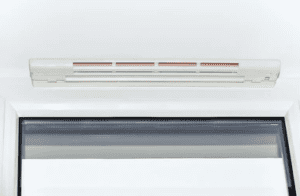
Trickle vents should be kept open in winter to prevent mould and condensation build-up.
Keeping them open allows a controlled amount of air to escape, which helps maintain a healthy environment inside the home.
Can you retrofit trickle vents?
You are able to retrofit trickle vents into already installed windows, as they are usually found above the window anyways.
If you possess the DIY skill to complete the retrofitting yourself, all you need is the correct tools and a trickle vent. However, we highly recommend getting a professional to complete the fitting so that you reduce the chances of incorrect installation.
Will trickle vents stop condensation?
Yes.
Trickle vents can help reduce condensation by providing continuous background ventilation and preventing moisture build-up, especially around windows, without causing heat loss.
Do trickle ventilation windows let heat out?
No, trickle vents do not let heat out. They are designed to maintain fresh air indoors without causing significant heat loss. You can keep them open year-round without major heat loss.
What is the primary function of window trickle ventilators?
Trickle vents facilitate natural air circulation, helping disperse indoor pollutants and enhance indoor air quality.

